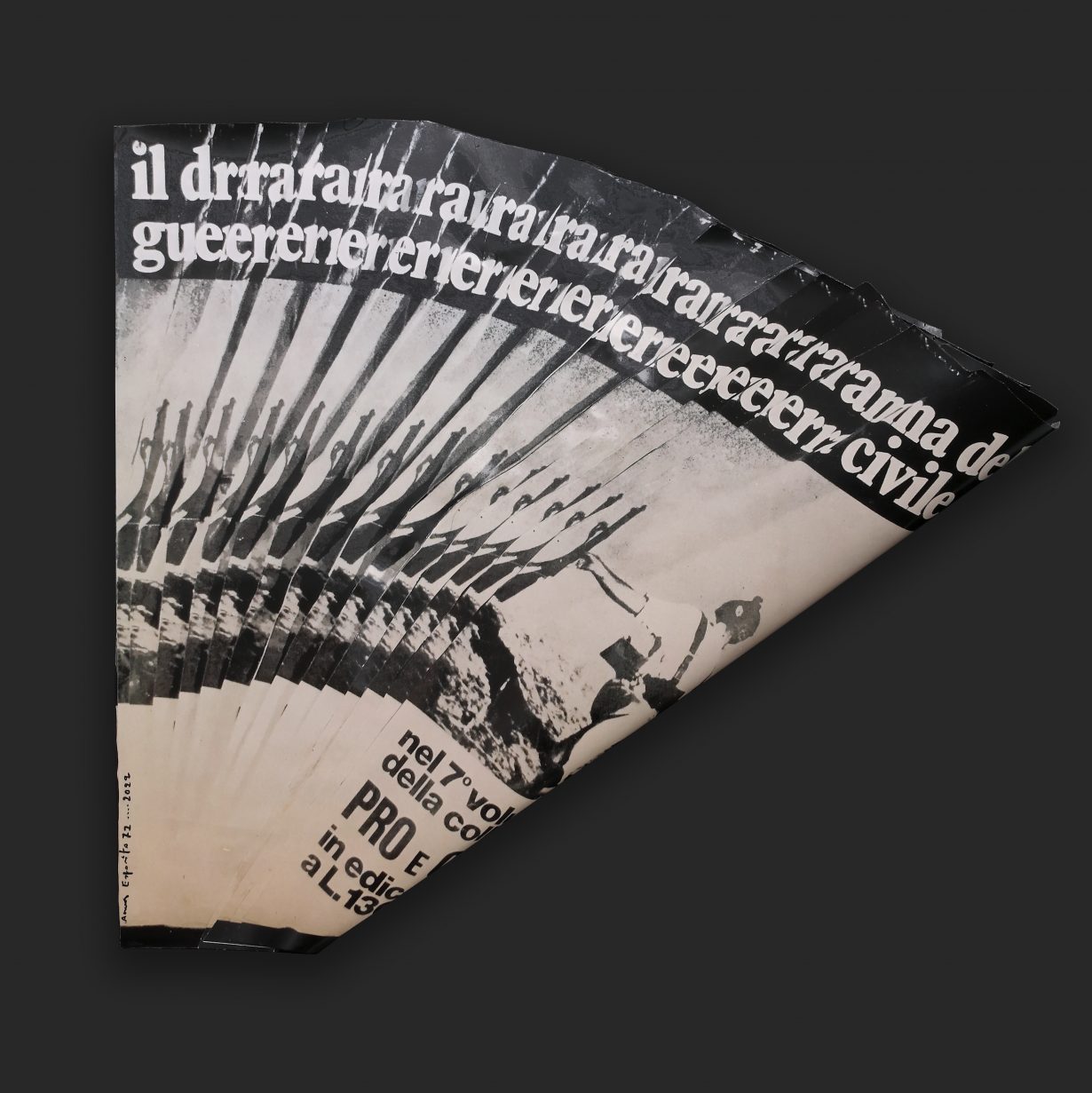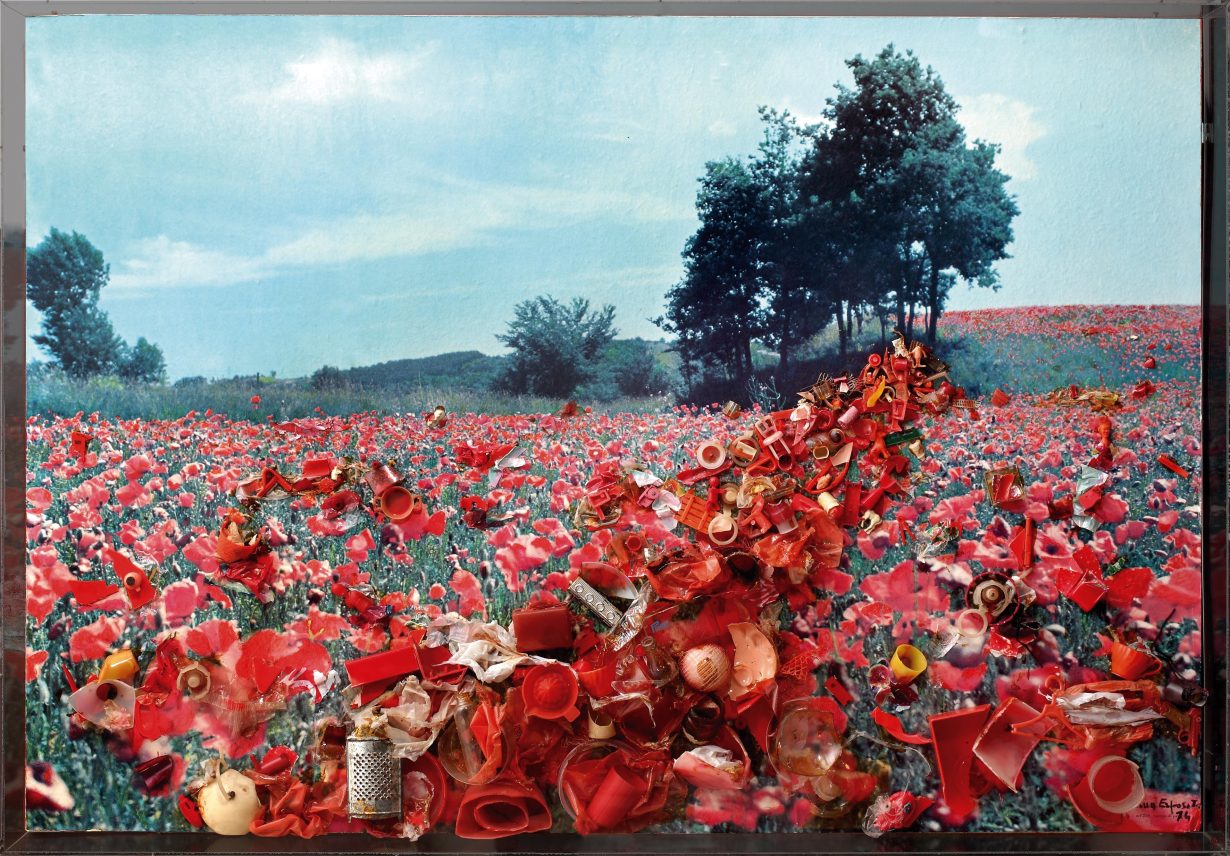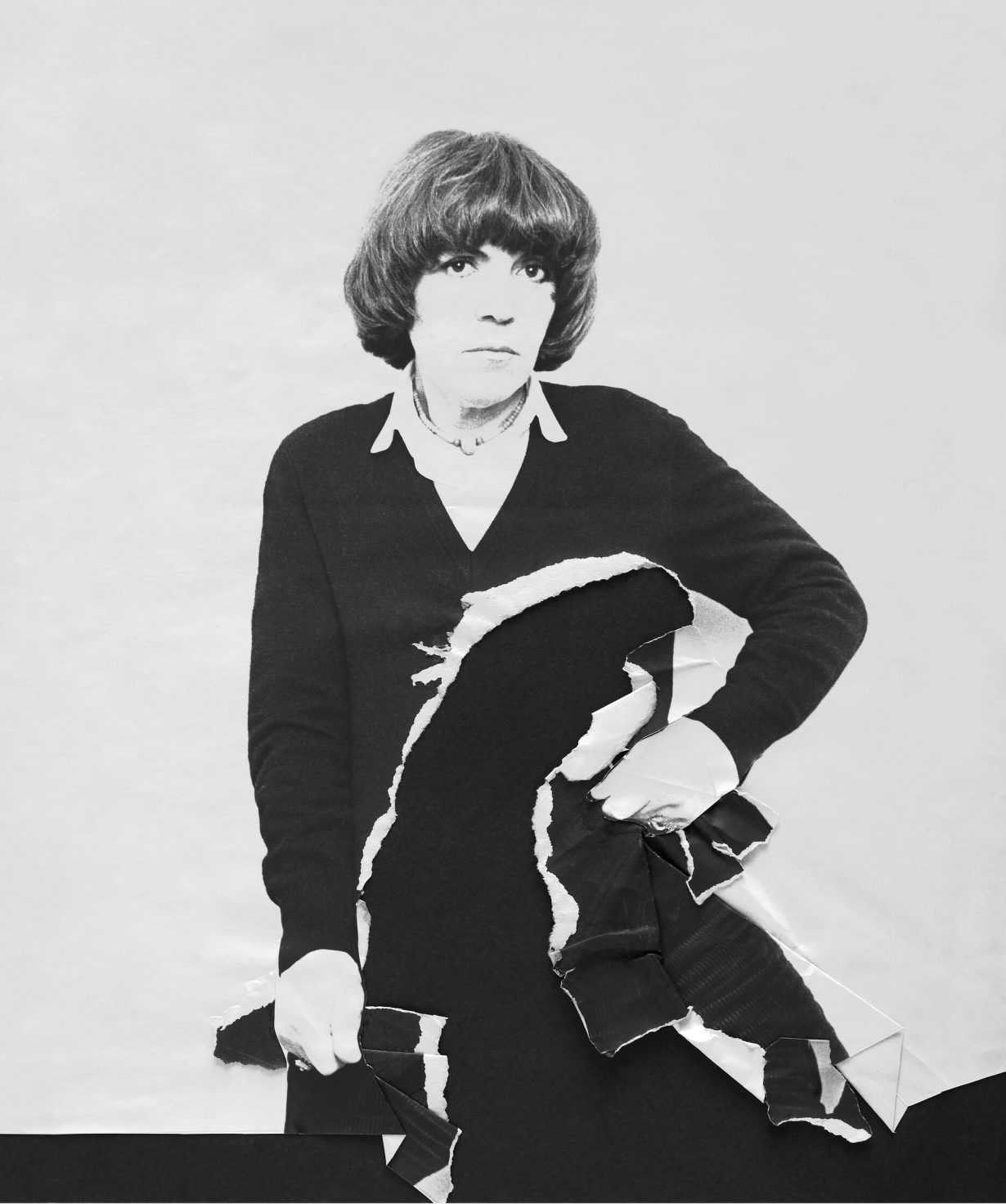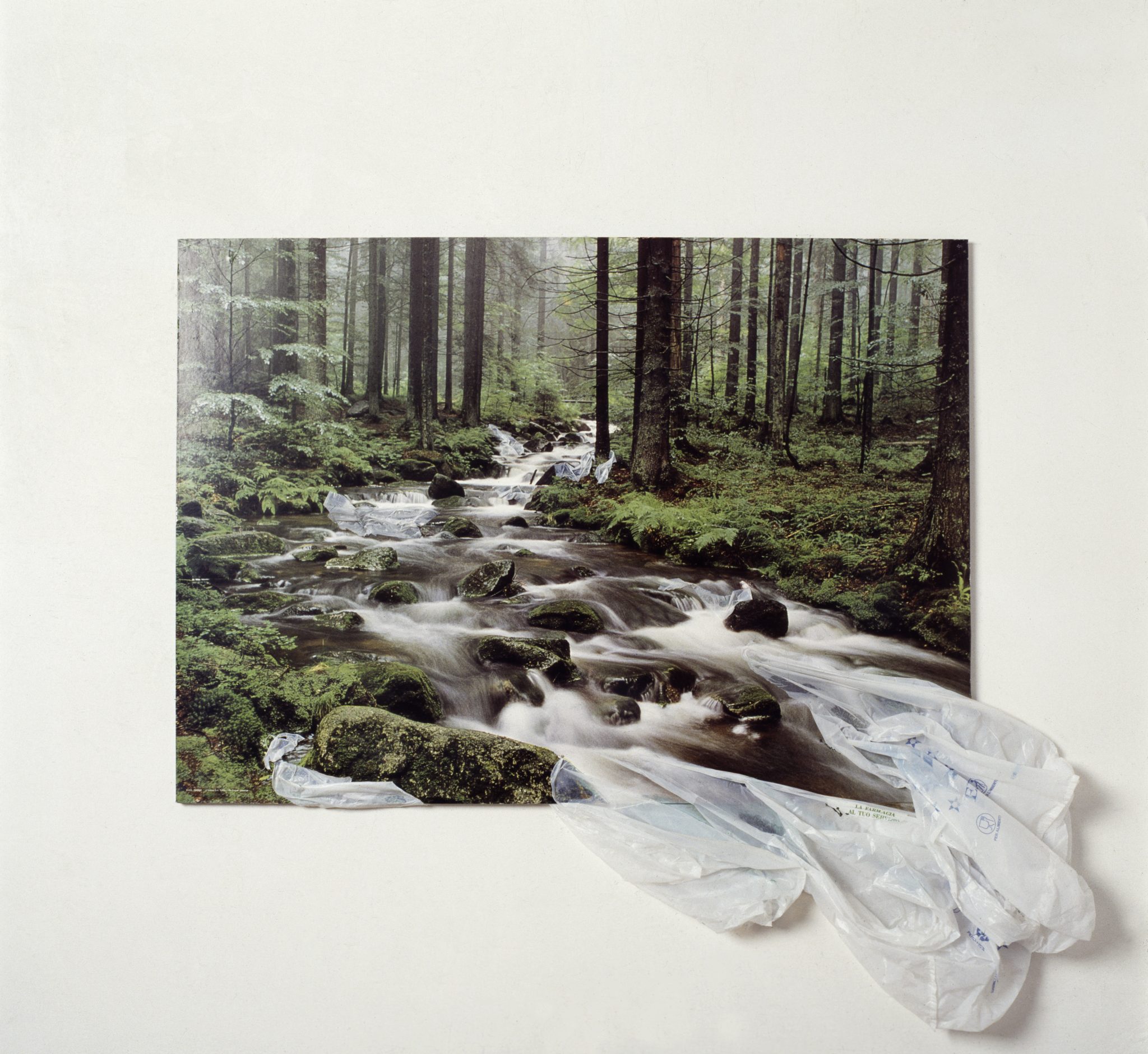What I’ve done at Gramma Epsilon, Athens finds the relatively little-known artist investigating our capacity to destroy our world
When the exhibition board of the 1978 Venice Biennale realised that the paltry representation of women risked provoking protests from feminist activists, it hastily commissioned the artist and poet Mirella Bentivoglio to curate an all-woman show. The resulting exhibition should be counted among the most consequential in the Biennale’s history, bringing together over 80 artists, including Sonia Delaunay, Agnes Denes, Natalia Goncharova and Ketty La Rocca, alongside the relatively little-known Anna Esposito. At Gramma Epsilon, a small selection of works from a 50-year career spent connecting the dots between feminism, social injustice and ecological destruction suggests that she has been unfairly neglected.
One of two collages to be shown at Venice, and remade by Esposito for this exhibition, Fan of gunshots (1972/2022) staples agitprop flyers featuring Robert Capa’s famous 1936 photograph of a falling Spanish Republican soldier into the form of a folding hand fan. By recycling an archetypal representation of heroic masculinity as a fashionable woman’s accoutrement, Esposito summons Virginia Woolf ’s critique of patriarchal culture: ‘This is an important book, the critic assumes, because it deals with war. This is an insignificant book because it deals with the feelings of women in a drawing-room.’ Fan of gunshots collapses the distinction.

In common with other artists to emerge from the poesia visiva (visual poetry) movement in 1960s Italy, Esposito employs the techniques of modernist poetry – unexpected simile, intense condensation, jarring juxtaposition – to confuse these and other hierarchies of value: between high culture and mass media, poetry and propaganda, personal and political. While there is little text in the work on show here (the exception being the other work to feature at Venice, a collage on plexiglass showing an ‘army’ of protesters bearing placards), collages such as Fishermen’s village (2006) show how such poetic strategies can be applied to the field of images. Here, the addition of painted fish and metal ring-pulls transforms an aerial photograph of a Greek fishing village into a comment on the living conditions of its inhabitants, packed into their homes like the sardines on which they depend for a living.

The visual resemblance of working-class housing to food packaging functions like an opportune rhyme, making a political point by witty association rather than extended harangue. The apparently offhand conflation of fishermen with fish also dissolves the most fundamental of those hierarchies that Esposito’s work challenges: the separation of humans from nature. Ecological view n.4 (Red view) (1974) tacks red plastic litter like blossom onto the image of a meadow; a later work in the same series, Ecological view (2004), takes advantage of the likeness between billowing white plastic bags and the white water of a brook as it runs over stones. A photo collage of a dead tree riddled with chainsaw blades against a lilac sky is titled San Sebastian (1992/2022), riffing on the anthropocentrism of cultural history and inviting the viewer to reconsider who, or what, is being martyred in the service of extractive capitalism. That humans are inextricably bound into the world explains why we are capable of destroying it and, by implication, it us: a show titled What I’ve done might equally have been called I told you so.

Bentivoglio titled her germinal 1978 exhibition Materialisation of Language, proposing that our forms of communication must be reacquainted with the physical world and suggesting – by playing on the derivation of ‘material’ from ‘mater’, or mother – that women are best placed to do it. If our ability to separate ourselves intellectually from nature is what makes it possible for us to sabotage it, and by extension ourselves, then one task of art might be to close the gap between what is real and what is represented. In Tearing up my self-portrait (1987), Esposito has ripped a printed photograph in such a way that her reproduced image seems physically to be pulling itself apart. By reconnecting the representation with its medium, Esposito gives it meaning: she makes it matter.
What I’ve done at Gramma Epsilon, Athens, through 1 October
